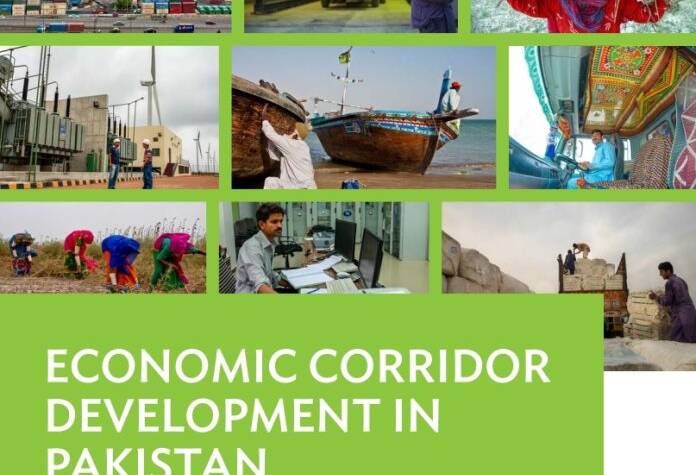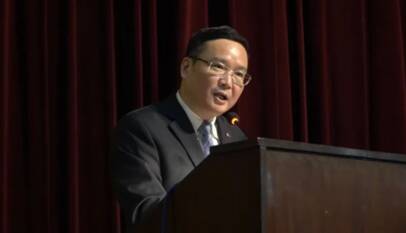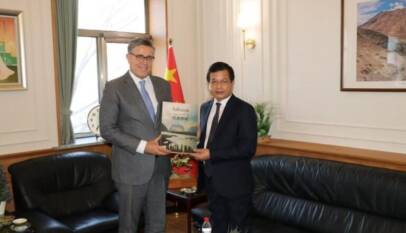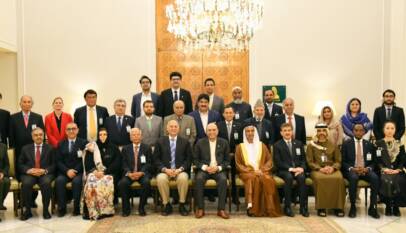ADB proposes measures to get the best out of CPEC
The report titled Economic Corridor Development (EDC) in Pakistan, released by the Asian Development Bank (ADB) has strongly recommended policy actions to fully explore the potential benefits of CPEC and raise income from exports and enhance the fiscal capacity of the government. The report also proposed to utilize the transport infrastructure built under the CPEC more effectively and efficiently to maximize investment return by converting it into a multilateral initiative. For instance, it said economic connectivity and integration with the landlocked Central Asian countries could provide the CAREC participating countries with efficient and effective access to global markets through the strategically located Gwadar port. This could help Pakistan maximize its strategic location and become the economic hub in Central. Furthermore, the study also called for expediting the development of the nine Special Economic Zones (SEZs) planned along the CPEC routes.
ISLAMABAD: Asian Development Bank (ADB) has strongly recommended Pakistan to undertake structural reforms, broaden tax base, utilise transport infrastructure, and expedite the development of nine Special Economic Zones (SEZs) to make the most of China-Pakistan Economic Corridor (CPEC).
The report titled Economic Corridor Development (EDC) in Pakistan, released by the ADB on Wednesday, also highlighted that despite signing Free Trade Agreements (FTAs) and Preferential Trade Agreements (PTAs), Pakistan could not boost its exports.
On taxation issues, the ADB suggested that a high-level constitutional body, similar to India’s GST Council, may be established through the Council of Common Interest (CCI), with clear accountability to resolve tax-related issues across the country.
The ADB report states that the CPEC investments improved Pakistan’s connectivity. To fully explore the potential benefits, it proposed some policy actions which could raise income from exports and enhance the fiscal capacity of the government.
First, undertake structural reforms to unleash the potential for private sector development, the report says and adds that structural reforms to support the private sector will enhance Pakistan’s competitiveness, productivity, and access to the global market.
It added that they could be critical to reducing the large trade deficit and boosting the foreign exchange reserves.
Possible reforms could include the following, but would not be limited to rationalising business regulations and taxation, improving trade facilitation and logistics, augmenting human capital development, and labour market efficiency, and strengthening financial inclusion along with deepening the capital market.
“Second, broaden the tax base to unleash the country’s tax revenue potential while improving the perceived fairness of the tax system,” the ADB advised Pakistan.
The IMF estimates suggest that Pakistan’s tax capacity is about 22.3 percent of GDP, implying a tax revenue shortfall of more than 10 percent of GDP in FY2019.
The ADB, in its report, praised the government’s recent measures to broaden the tax net as steps in the right direction. It, however, added that more could be done by implementing a rigorous reform agenda to broaden the tax net, such as cutting tax concessions and exemptions, addressing structural weaknesses in fragmented tax administrations, and improving economy-wide tax compliance.
The ADB report’s third suggestion was to utilise transport infrastructure built under the CPEC more effectively and efficiently to maximizse investment return by converting it into a multilateral initiative. For instance, it said, economic connectivity and integration with the landlocked Central Asian countries could provide the CAREC participating countries with efficient and effective access to global markets through the strategically located Gwadar port. This, according to the report, could help Pakistan maximise its strategic location and become the economic hub in Central, West, and South Asia. In this context, links with the CAREC countries could be strengthened, particularly on trade-related issues, such as standards, sanitary and phytosanitary measures, customs procedures, rules of origin, e-commerce, and intellectual property rights, the report added. Consequently, Pakistan could increase toll and tax revenues while developing mutually beneficial economic partnerships for boosting export income, the report suggested.
Tax effort is estimated as a ratio between actual revenue and potential revenue.
Finally, the multilateral lender stressed Pakistan should expedite the development of the nine SEZs planned along the CPEC routes. Given their high-risk and high-return nature, SEZs should be developed based on global best practices and local knowledge with an aim to attract the Peoples Republic of China (PRC’s) export-oriented sunset industries, the report added. It said the PRC’s wage rise and the policy shift from low-end manufacturing to technologically advanced manufacturing had made the production of export-oriented goods and services unfeasible in China.
“The PRC government, therefore, is expected to relocate these industries to other developing countries and Pakistan could be well-positioned to negotiate for the relocation of such industries on mutually beneficial terms,” the ADB said. The recent consultation between Pakistan and the PRC on the framework agreement for industrial cooperation through business joint ventures and SEZs development is welcome and could promote Pakistan’s industrial activities, according to the report.
The ADB also advised Pakistan to realise the expected gains from the concessions granted by partner countries under the FTA) and preferential trade agreement (PTA). Despite market access obtained by the government, Pakistan exporters have not taken full advantage of the concessionary tariffs to increase their share in partner countries’ imports, the report says.
As per the report, the possible reasons, for this could be shallow integration with major products in the concession list, nontariff measures applied by the FTA and PTA partners, lack of awareness in the business community, erosion of preference/concessions available to Pakistan as a consequence of the FTAs and PTAs signed by partner countries with other countries, and declining export competitiveness.
It said the government could do the following to realise the expected gains that are: a create awareness among the business community by launching a well-coordinated, interactive, a targeted campaign to reach out to businesses at home and abroad, develop and enhance the government’s in-house research capacity to identify and prioritise products and markets and better negotiate the terms of FTAs and PTAs, and analyse the causes of declining export competitiveness and develop a road map for addressing them.
The government should also implement the recommendations of the Tax Reform Commission and hold regular roundtable conferences with leading tax and legal experts to review existing laws for enlarging the tax base, the report suggested.
“The government has endeavored to simplify and automate the tax return system, and this has been received well by businesses. Continuing to use technology to reduce compliance costs and improve interprovincial and federal–provincial coordination will help bring firms into the formal sector and generate the fiscal capacity and support the process of structural transformation.”
ADB analysis indicates that Pakistan is facing an acute infrastructure financing gap of about 5 percent of GDP. “Pakistan needs to put in place appropriate policies and initiatives to involve its diaspora in the mainstream capital market and mobilise their income and wealth into productive investment vehicles in the form of innovative financing for good projects in Pakistan,” the report said.
It said overseas Pakistanis, especially in the US, the UK, and the Middle East, were well-financed and highly educated, adding, the annual combined wages of the Pakistani diaspora were estimated to be around $52 billion or around 20 percent of Pakistan’s GDP.
Moreover, the investment potential of the Pakistani diaspora was estimated to be around $4 billion–$5 billion annually. “Pakistan must seek ways to channel a proportion of its diaspora resources into a profitable investment vehicle to fund ECD-related projects,” the report concluded.
Chinese envoy Zhao Shiren urges students to uphold integrity and strengthen China-Pakistan ties
LAHORE:The Consul Generals from several countries and other distinguished guests attended …











